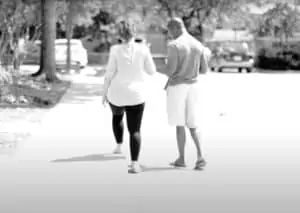It’s easy to forget that a c-section is a major abdominal surgery until you try climbing the stairs for the first time after your surgery. You’ll quickly realize why doctors advise against climbing stairs or recommend that, at the very least, you limit the frequency at which you need to walk up and down them.
For some mothers, avoiding the stairs entirely after a c-section is impossible. You might live in an apartment with no elevator, or your bathroom could be on the second floor of your home. No matter your situation, you must do everything possible to avoid further delaying your healing or injuring yourself.
Is Climbing Stairs Good After a C-Section?
In general, doctors recommend that moms avoid climbing the stairs for the first to three weeks after surgery. Your body is going through a lot right now, focusing on healing completely.
Not only does it put stress on your body and pressure on your abdominal muscles, but using the stairs also poses a falling risk that could cause your incision to reopen.
With that being said, avoiding stairs isn’t always possible. I live in a two-story home with bedrooms upstairs, so they are sometimes unavoidable. You have to be careful and take the stairs as slowly as possible.
Here are some postpartum restrictions on housework you should follow after giving birth.
5 Tips for Climbing Stairs After a C-Section
If you have to use them, you must do so with great caution and care to avoid potential problems. Here are some simple tips.
Use Them As Little As Possible

If you have stairs in your home, you may need to use them sometimes, but you want to do so as little as possible. It’s best if you make all attempts to limit uses. If your bathroom is upstairs, you might want to stay in your bedroom for extended periods so that you don’t need to go up and down multiple times.
Bring Supplies Downstairs
One of the simplest things you can do is bring the supplies you need for the day downstairs. Grab some diapers, wipes, and extra clothes for your baby downstairs. Make sure your living room has everything you need to be comfortable such as pillows or blankets.
Move Slowly
Quick movements, such as falling down the stairs, can cause severe problems for your incision. That’s one of the reasons why driving after a c-section isn’t recommended. Falling or jerking can be detrimental to your healing.
Be sure to use the handrails. They’re needed for support, and they can stop you from falling down the stairs.
Get Support If You Need It
You might need to ask your partner, family, or friends for support. Sometimes, my husband would walk behind me to help support my back or ensure that I wouldn’t fall backward.
Don’t Carry Heavy Things
Doctors recommend that you only carry items as heavy as your baby, but it’s best not to bring anything up the stairs. In some circumstances, if your partner has to go back to work and you have no help, you might have to carry your baby upstairs. However, it’s best to avoid it at all costs.
When Can I Climb the Stairs After a C-Section?
You can climb stairs whenever you want so long as you don’t rush and it feels comfortable. Listen to your body; that’s vital during healing. If you feel like taking the stairs is too much, follow your instinct and what your body tells you.
I felt much better by three to four weeks postpartum. By that time, I could comfortably go up and down the stairs, but it wasn’t time to run a marathon up and down them.
That’s going to be individual. Some might feel better within two weeks, but other women might not feel up to tackling the stairs until closer to six weeks postpartum.
Take Stairs Slowly
Stairs might seem like the last of your concerns, but you must consider them ahead of time. You know that your doctor doesn’t recommend climbing stairs after a c-section, but it can sometimes be unavoidable. Take it slow, avoid carrying items upstairs, and limit how many trips you need to take.
Hey, this is Linda. My biggest accomplishment in life is being a mother of four children. Their current ages range from almost ten years old down to 20 months old.
I’m passionate about writing parenting articles because I understand so well all of the problems and trials you face as a parent. From breastfeeding woes to budgeting problems and behavior problems, along with everything in between, chances are I’ve faced it over the last ten years. Read more about Linda here.



